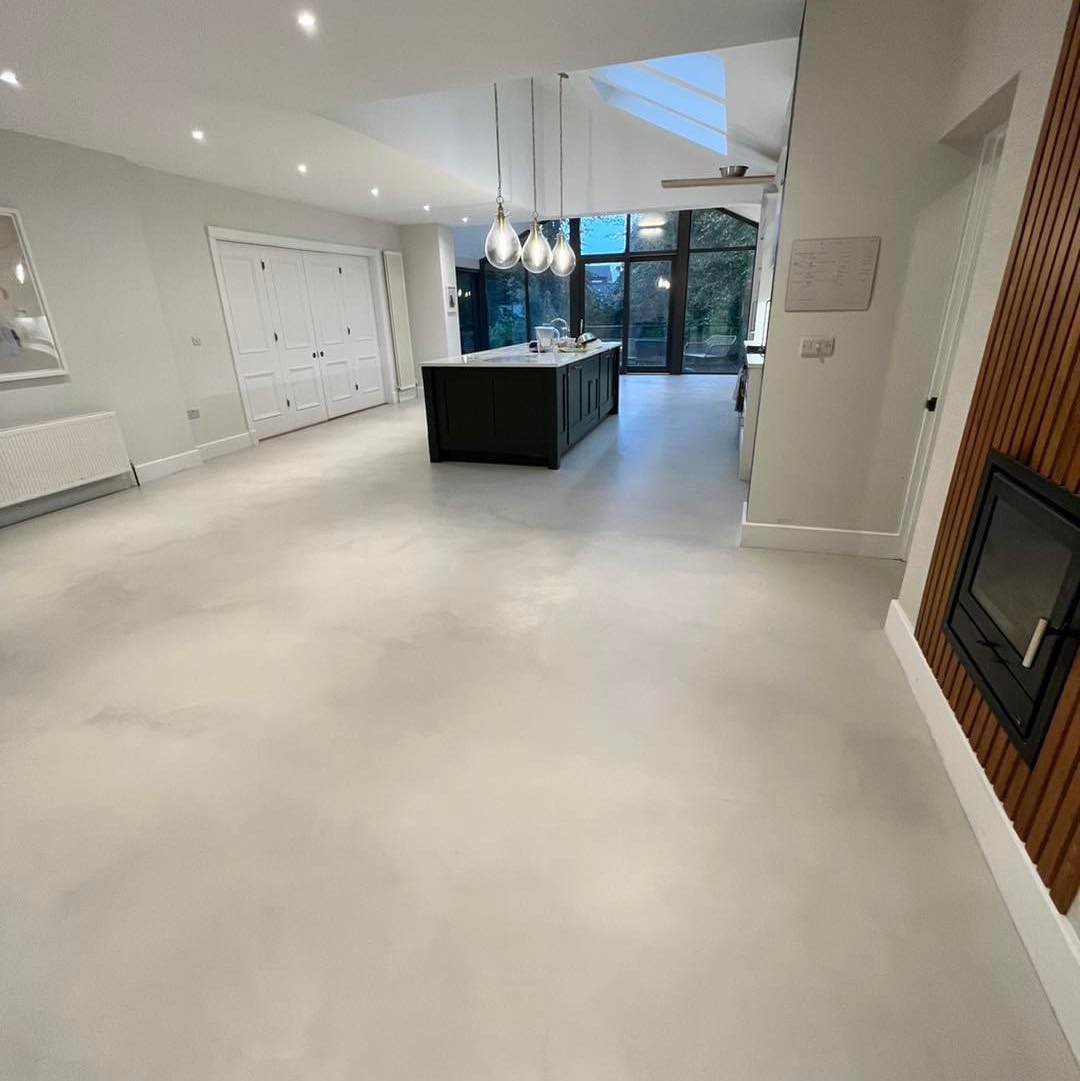Can Microcement Be Used with Underfloor Heating?

Share
- Bathroom
- Flooring
- Home Decor
- Home Renovation
- Interior Design
- Microcement
- Microcement Application
- Microcement Floor
- Microcemento
- Underfloor Heating
Yes, it is possible to use microcement with underfloor heating systems. One of the many reasons it is a popular finish is its compatibility with underfloor heating systems, which is becoming a standard for many modern homes and even commercial places.
We have listed some of the important considerations for using microcement with underfloor heating.
Benefits of Using Microcement with Underfloor Heating
Thermal Conductivity:
Due to its excellent thermal conductivity, it can transfer heat efficiently from the underfloor heating to the surface. This means even and comfortable temperature distribution across the surface.
Flexibility:
Due to the composition of Microcement, as a coating system made up of different components, the different binders and polymers in the material allow for it to withstand the expansion and contraction caused by temperature changes, and thermal stress.
Seamless Finish:
The seamless finish it creates on the surface, and the absence of grout lines and joints, ensures consistent temperature across the floor.
Thin Application:
Due to its nature as a product, Microcement can be applied in very thin layers, which is usually around 2-3 mm, which means quick and efficient heat transfer and warming of the surface. This is also very practical for projects where the floor height is a concern.
Installation Considerations
Proper Substrate Preparation:
To ensure the material is applied properly, the minimum thickness of the screed and any substrate over the underfloor heating need to be double-checked with the manufacturer.
The substrate has to be stable and free of any cracks, as any movement can lead to issues with the Microcement, especially when combined with the changing temperatures it's exposed to with underfloor heating.
Insulation:
Adequate insulation of the surface before the installation of the underfloor heating system is crucial, as it ensures the heat will be directed upwards, rather than being lost.
Gradual Heating:
Thermal shock is a risk with underfloor heating, which can cause cracking on the Microcement surface. To avoid this, it’s important to increase the temperature gradually when it’s used for the first time and allow the material to acclimate.
Professional Installation:
Microcement in itself is a very technical coating system to apply, but when combined with an underfloor heating system it requires a deep technical understanding of both systems and professional experience, as even minor mistakes can create serious future problems.
Curing Time:
Without allowing adequate curing time for the Microcement, the underfloor heating should not be turned on. This usually means at least two weeks after the application of the final coat but may need to be more depending on the temperature, ventilation and humidity. Always double-check with the supplier.
Maintenance Tips
Temperature Control:
Keeping the temperature consistent, without setting it too high can help maintain the integrity of the microcement and avoid weakening of the material.
Regular Cleaning:
Maintaining the surface according to instructions and avoiding harsh chemicals are essential to ensure it maintains its appearance and longevity.
Conclusion
Microcement is an excellent surface solution to use in conjunction with underfloor heating systems, due to its good thermal conductivity. Its functional and aesthetic properties make it a competitive alternative for various surfaces, especially in wet room areas.
Professional installation and maintenance are key to ensuring that the material works well when combined with an underfloor heating system. By following the recommended advice, you can enjoy all the functional and aesthetic advantages of the beautiful, seamless finish.
For any advice about our Microcement Systems, be sure to contact sales@imperaitalia.com.
If you are interested in learning the professional application of Microcement, check out our beginner and advanced courses!
